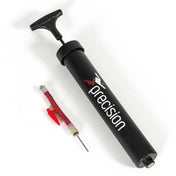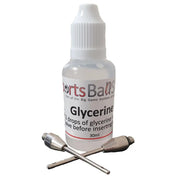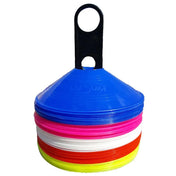Have you ever heard players and coaches saying that the grip on their rugby ball is not as good as it used to be or it's slippy when wet or cold. Maybe they compare the ball in hand to an old favourite and comment on the feel of the ball. When a club introduce a new brand a common complaint is 'It's not as good as the Gilbert ball we normally use'. It probably is but the user is blinkered and have a biased opinion, as most of the worlds rugby balls are manufactured in India and the materials come out of the same rubber producing plants.
So how are the graphics applied to the ball, how does a rugby ball gets it's grip and why can't you easily customise a rugby ball when the grip is present? A lengthy process of curing and masticating the rubber compound takes place (this becomes the outer layer of the ball) before this is adhered to the multi layered cloth material (which forms the inside of the ball). The cloth can be 2, 3 or 4 ply depending on the quality of the ball. Once your design is finalised a cellophane sheet is impregnated with a rubberised ink which forms the graphics required. This is applied to the flat sheet as shown below.

The rubber sheet is smooth at this point and is ready to have the grip applied

To ensure the graphics are part of the ball, the ink is produced using the same type of rubber and when heated this becomes part of the outer layer and not a separate layer sat on top of the ball. The rubber sheet now needs to have the grip applied and the graphics heated up to become one.



The grip configuration is already manufactured within the metal plates. Each can have a grip unique to a manufacturer, although most tend to use the standard grip configuration as it is the most reliable. The rubber sheet is placed on top of this plate and then inserted into the oven press. As the press heats up the plate moulds into the rubber surface and creates the grip we see in the final stage of production. A 2 ply ball needs baking for 5 minutes, a 3 ply needs 6 minutes and a 4 ply match quality rugby ball is baked for 7 minutes.

The ink has now penetrated the rubber and the grip has formed so the cellophane sheet that used to hold the graphics is removed.

That is how the grip and graphics are manufactured onto the rubber sheet in all cases so, the difference in the quality of the ball is often in the eye of the beholder. We can supply Custom printed Gilbert and Lusum balls as they are produced in the same way so, your graphics become part of the ball and will not fall off. If you wanted the graphics added after the ball is gripped and stitched, there will probably be a lot of air pockets and this will then make it more likely the graphics will fall away from the rubber. If you are looking for customised rugby balls or rugby balls from stock check our our
Rugby Balls section. We have also produced a video showing the process described above on our
Sportsballshop You tube Channel
 The rubber sheet is smooth at this point and is ready to have the grip applied
The rubber sheet is smooth at this point and is ready to have the grip applied  To ensure the graphics are part of the ball, the ink is produced using the same type of rubber and when heated this becomes part of the outer layer and not a separate layer sat on top of the ball. The rubber sheet now needs to have the grip applied and the graphics heated up to become one.
To ensure the graphics are part of the ball, the ink is produced using the same type of rubber and when heated this becomes part of the outer layer and not a separate layer sat on top of the ball. The rubber sheet now needs to have the grip applied and the graphics heated up to become one. 

 The grip configuration is already manufactured within the metal plates. Each can have a grip unique to a manufacturer, although most tend to use the standard grip configuration as it is the most reliable. The rubber sheet is placed on top of this plate and then inserted into the oven press. As the press heats up the plate moulds into the rubber surface and creates the grip we see in the final stage of production. A 2 ply ball needs baking for 5 minutes, a 3 ply needs 6 minutes and a 4 ply match quality rugby ball is baked for 7 minutes.
The grip configuration is already manufactured within the metal plates. Each can have a grip unique to a manufacturer, although most tend to use the standard grip configuration as it is the most reliable. The rubber sheet is placed on top of this plate and then inserted into the oven press. As the press heats up the plate moulds into the rubber surface and creates the grip we see in the final stage of production. A 2 ply ball needs baking for 5 minutes, a 3 ply needs 6 minutes and a 4 ply match quality rugby ball is baked for 7 minutes.  The ink has now penetrated the rubber and the grip has formed so the cellophane sheet that used to hold the graphics is removed.
The ink has now penetrated the rubber and the grip has formed so the cellophane sheet that used to hold the graphics is removed.  That is how the grip and graphics are manufactured onto the rubber sheet in all cases so, the difference in the quality of the ball is often in the eye of the beholder. We can supply Custom printed Gilbert and Lusum balls as they are produced in the same way so, your graphics become part of the ball and will not fall off. If you wanted the graphics added after the ball is gripped and stitched, there will probably be a lot of air pockets and this will then make it more likely the graphics will fall away from the rubber. If you are looking for customised rugby balls or rugby balls from stock check our our Rugby Balls section. We have also produced a video showing the process described above on our Sportsballshop You tube Channel
That is how the grip and graphics are manufactured onto the rubber sheet in all cases so, the difference in the quality of the ball is often in the eye of the beholder. We can supply Custom printed Gilbert and Lusum balls as they are produced in the same way so, your graphics become part of the ball and will not fall off. If you wanted the graphics added after the ball is gripped and stitched, there will probably be a lot of air pockets and this will then make it more likely the graphics will fall away from the rubber. If you are looking for customised rugby balls or rugby balls from stock check our our Rugby Balls section. We have also produced a video showing the process described above on our Sportsballshop You tube Channel




